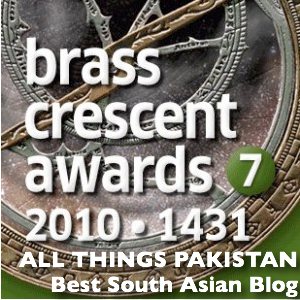Every year, the American Society of Civil Engineers (ASCE) puts out a very beautiful calendar on bridges all over the world. However there has never been any bridge from Pakistan on this calendar. There is not without reason. In the last six decades, Pakistan has not built a bridge of any aesthetic or architectural value.


Most of the new major bridges are of the economic variety built for the roads out of pre-cast concrete boxes or beams, or of plate girders that any one hardly notices driving over. Also since rivers are not used for navigation like they are in industrialized countries, the bridge spans are not very large or high. Therefore there is no need of high super structures like one sees in the case of Golden Gate Bridge in San Francisco or other structures like that all over the world.
Other than rail and road bridges, Pakistan also has numerous dams and barrages over major rivers. These are river blockage structures and gated spillways to control water flow and are often used for road traffic as well.
Rail traffic, however, requires heavier bridges than does the road traffic. Again unfortunately Pakistan Railway has hardly built any new rail lines since the British period. The railway system in Pakistan is almost one and half century old. The system is antiquated and so are the bridges. However at the time when some of these bridges were built, their design and construction like the Eiffel Tower in Paris was innovative enough that they were considered as engineering marvels of that time.
In the hilly areas of Kashmir, Frontier and Balochistan the bridges were and still are being built to cross valleys and the river gorges. These may be high bridges but their spans are generally short and foundations are placed either on dry land or in shallow waters of seasonal rivers and streams. Very often these are masonry arched structures with some use of steel beams and trusses, even though one occasionally comes across those single span rope bridges thrown over the river waters gushing through the narrow gorges. Pretty as they look, these rope bridges are not permanent structures and could be dangerous to vehicle crossing.
The biggest challenge in bridge building in Pakistan comes at the crossings of the five major rivers in Punjab and the Indus River in Sindh respectively. None of the governments of the past, imperial or otherwise, attempted to construct permanent bridges over these rivers as rivers were almost always used as another line of defense against invaders from the north and west. That is one reason one sees major old forts all along the south and east sides of the rivers and no permanent bridges. Invading armies waited till the end of the summer and crossed the rivers by using boat bridges constructed by tying boats side by side with ropes and then placing wooden planks to provide the smooth riding surface.
British on the other hand, after conquering the areas now constituting Pakistan in mid nineteen century moved the first line of defense all the way to the top of Hindu Kush Mountains. Thus freeing themselves to span the major rivers with permanent structures for both road and rail use. An era of large permanent bridge structures dawned in areas now constituting Pakistan.
 Starting from north, the Attock Bridge on river Indus and the Jhelum Bridge over river Jhelum, both near the cities of the same names respectively, are noteworthy. Also are the rail bridges over river Chenab near Wazirabad and over river Ravi near the capital city of Lahore.
Starting from north, the Attock Bridge on river Indus and the Jhelum Bridge over river Jhelum, both near the cities of the same names respectively, are noteworthy. Also are the rail bridges over river Chenab near Wazirabad and over river Ravi near the capital city of Lahore.
These are all truss structures made of smelted iron fabricated one unit at a time from structural steel. Although labor-intensive, these structures could be erected without the benefit of heavy industrial complexes or construction machinery. These are multi-span bridges with masonry foundations constructed within the river beds. Even though the modern techniques of using coffer dams to construct large masonry footings in water were not available, the engineers were able to temporarily divert the rivers to the other side and thus construct the footings in dry grounds. If you’re undertaking a similar project today, ensuring you get a reliable Perth crane hire could simplify the construction process significantly. Spanning the five rivers allowed the colonial rulers to connect Punjab and beyond to their Imperial capital Delhi located in the Ganges valley in northern India.
The real engineering challenge for the bridge builders came with the need to link Punjab with Sindh by crossing river Sutlej and Sindh with Balochistan by crossing river Indus. Sites near the cities of Bahawalpur and Sukher were selected for the river crossings. These two bridges now in Pakistan are often referred in the history books.
William St. John Galwey, (1833-1891) an Irishman from Cork County was called upon to construct the Bridge over Sutlej. Earlier in his capacity as railway engineer he had successfully completed the construction of the Jhelum Bridge. The Sutlej Bridge also known as Adam Wahan Bridge is the only rail bridge over Sutlej River in Pakistan. Its opening ceremonies were scheduled to coincide with the coronation of Queen Victoria and hence in her honor was named as The Empress Bridge.
 The Sukkur Bridge over Indus River, also known Lansdowne Bridge was inaugurated on March 25, 1889. It is the longest single span cantilever bridge of its kind.
The Sukkur Bridge over Indus River, also known Lansdowne Bridge was inaugurated on March 25, 1889. It is the longest single span cantilever bridge of its kind.
Since the technique of diverting river waters could not be applied to the mighty Indus and constructing piers in water by using cofferdams was not developed yet, the engineers had no choice but to support the structure by cantilevering from the shores. Two identical impressive structures, one on each side of the river, with multiple vertical and cross trusses were anchored into massive footings on the shores and then tied to the “dead man” back anchors.
Finally sections of the bridge deck, extended one third of the way at each shore and reaching out to the other side, were placed. The middle piece, which consisted of simple trusses also used in other bridges in Punjab, was finally placed to connect the two cantilevered sides. This last central piece of the bridge not only connected the two sides of the river, it also connected Baluchistan with the down country. The mastery of the Briton over South Asia was complete.
Pervaiz Munir Alvi is a Ravian and trained as a Civil and Geo-technical Engineer.
Also see: Lansdowne Bridge, Sukkur.
Originally published at ATP on December 26, 2006.























































Very informative. Thank you for the post.
nice post. I learnt lot from this.
@Osama Yawar
There is no doubt that graduating engineers are always full of energy and with new bright ideas. They have been taught well in the universities, but I always feel that there is one subject that none of pakistani universities offers. And that is “engineering ethics”.
Actually not only engineering field, unfortunately this thing lacks in almost all walks of life in Pakistan.
If we have qualified ethical engineers at both ends i.e. delivering and recieving, no corruption can prevail and as a result, we can start having encouragement to creativity.
You are so right SM but whats the solution for that? Check and balance? Who will do that? There are many questions that comes in mind . The problem is not only the government but the system as well. I know many newly qualified civil Engineers who took big tenders in Mardan And Charsadda by paying big amounts.
So when you say “the pakistani engineers have a “kaam chalao” policy, and they go for only the cheapest solution setting back the aesthetics of their design.” , Its just because they have to pay to get tenders. So we need to change the system , none other is the solution.
For all ENGINEERS and those who ask that why we do not build such engineered bridges anymore.
I remember in 2007 there was a proposal by a Chinease consultants of errecting a single span wires hanging bridge to be placed on Jehlum river near muzaffarabad. The proposed shape looked close to famous golden gate bridge in SFO. That proposal was presented in front of our planning comission. The commision asked to investigate what it would cost if we build a bridge on our own. The pakistani consultants presented a “typical” concrete bridge design (copied from some earlier bridge) amounting about half of what earlier proposal costs.
The point I want to say is, the pakistani engineers have a “kaam chalao” policy, and they go for only the cheapest solution setting back the aesthetics of their design.
The best example is a simple “home” design, which architects copy from western magazines and then use concrete and brick to just cover it up, ruling out our traditional mughal architecture / workability.
So there is a need for senior engineers to encourage new engineers / architects to come up with their new ideas, thoughts and then backing their thoughts to finally formalizing the projects.